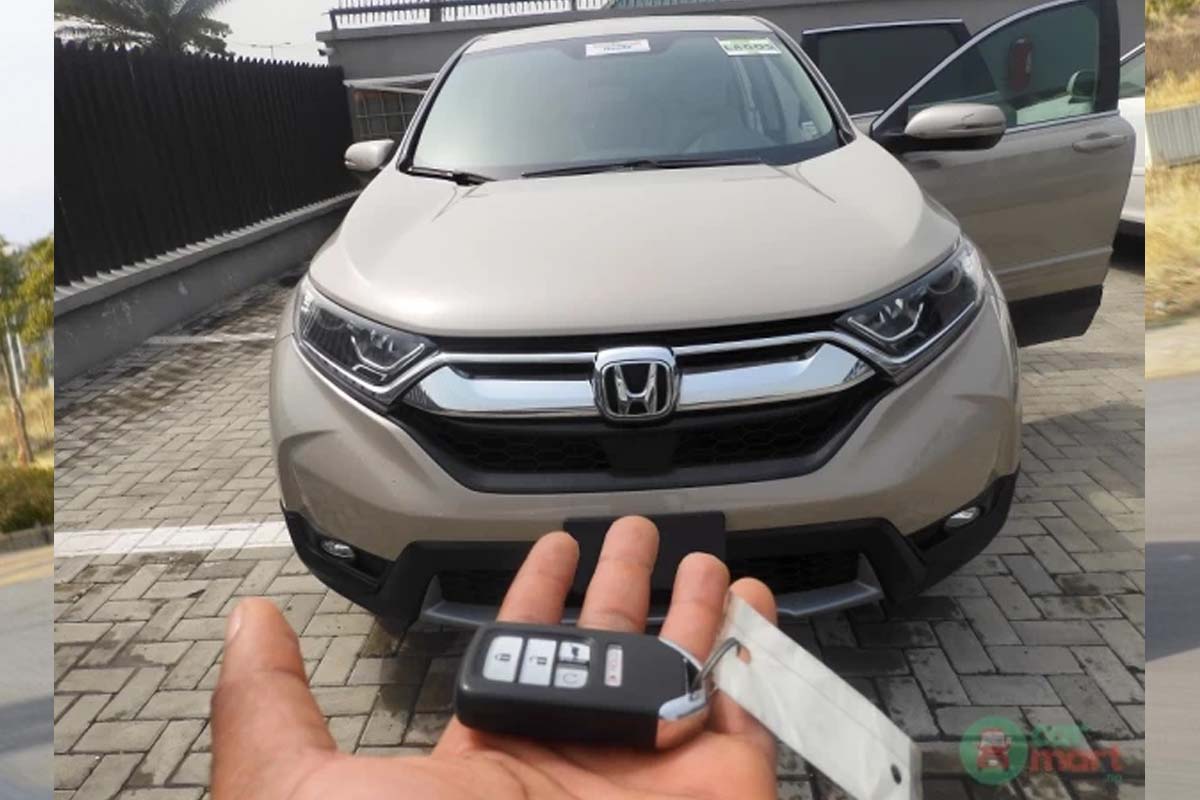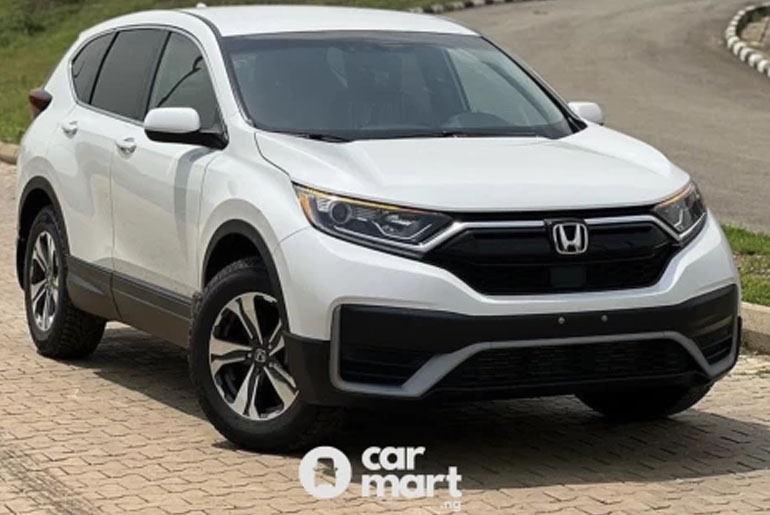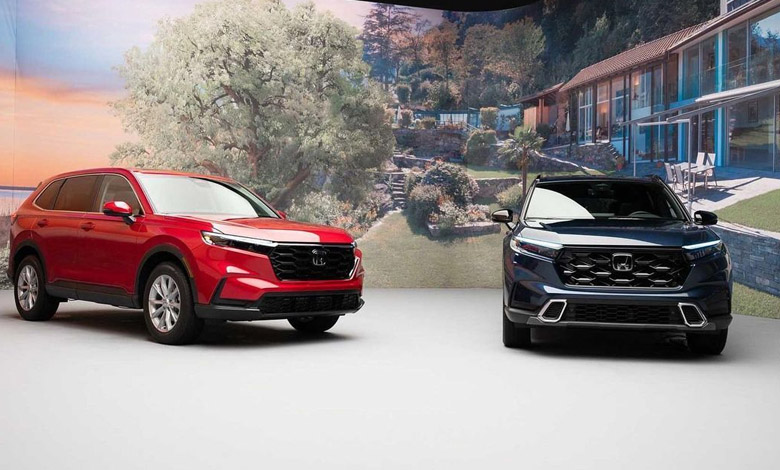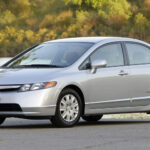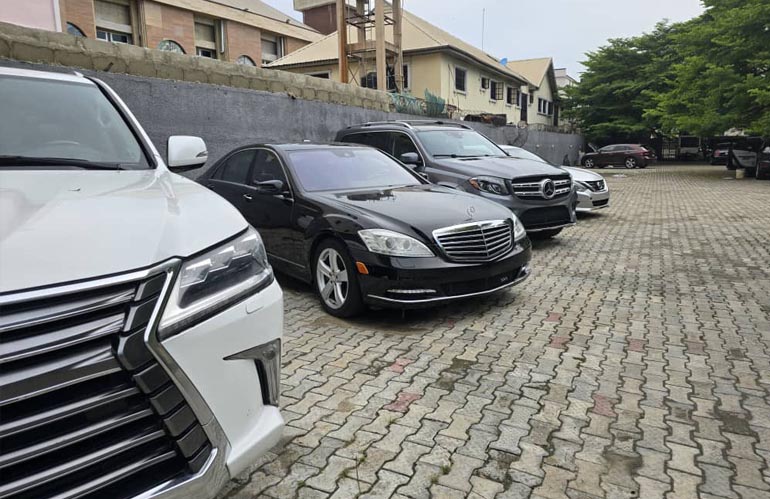The used Honda CR-V has long been a solid contender in the compact crossover segment, and its popularity is well-earned. It strikes an excellent balance between speed and efficiency, but Honda’s sporty little crossover is also roomy, tech-savvy, and seriously accommodating. Our used car buying guide is here to help you figure out how the CR-V has changed over the years.
Table of Contents
Fifth Generation: 2017 Current Model
The CR-V was always a segment leader, but Honda was somehow able to make it even better for the fifth generation. This batch of crossovers rolled out a turbocharged engine that combines sporty low-end torque with thrifty fuel economy, earning as much as 34 mpg on the highway. An upgraded suspension improves ride quality by smoothing out bumps in the road and reducing body roll-around turns.
Look for all-wheel-drive CR-V models to help you navigate wet roads and sandy trails. Fifth-generation models also include 1.5 inches of extra ground clearance and a wider wheelbase, both of which come in handy in light off-road settings.
Inside, the fourth-generation used Honda CR-V also impresses. A new dashboard includes a digital instrument cluster and an updated touch-screen infotainment interface. Compared to previous CR-Vs, these models also offer a little extra backseat legroom. These crossovers are also great for hauling cargo. Fold down the rear seats to create 75.9 cubic feet of maximum cargo space.
Because Honda continues to update the CR-V, you may see some changes from model year to model year. So far, there haven’t been a ton of changes to these models. Here’s what you need to know:
For 2020, the turbocharged 1.5-litre engine became standard, so you can balance sporty performance with efficiency at no extra cost. This model year also made the Honda Sensing suite of driver safety aids standard equipment.
Fourth Generation: 2012 – 2016
The fourth-generation CR-V came standard with more features, which is good news for used shoppers. Inside, you’ll also find more high-quality cabin materials. Compared to older model years, these crossovers also earn better fuel mileage, with up to 29 mpg combined.
Here are a few things to look out for on the used lot:
For 2016, the CR-V re-introduced the Special Edition (SE) trim model, which adds to the base LX’s features with 17-inch alloy wheels, a security system, and rear privacy glass.
The CR-V underwent a mid-cycle refresh for the 2015 model year. A new exterior design gives this crossover a more modern look. Inside, newly optional features like a 7-inch touchscreen and rear climate vents offer greater comfort and convenience. And the 2015 CR-V’s new continuously variable transmission improves fuel economy slightly.
Third Generation: 2007 – 2011
Drivers love this batch of CR-V crossovers for their family-friendly seating, high-quality cabin materials, smooth performance, and sporty handling.
The 2011 CR-V adds a new trim model, the SE, to the lineup. It slots between the base LX and mid-grade EX. For 2010, Honda retooled the CR-V engine to enhance performance with 14 more horsepower and 1 extra mpg on the highway. Bluetooth and a USB audio port were also added to the list of options.
As you might expect, the Honda CR-V doesn’t have that many issues compared to the competition. It has been a generally reliable vehicle ever since the first version was launched back in 1997. It has remained reliable and mostly trouble-free throughout the years, because, well, Honda.
If you’re looking to buy one of these things, continue reading to find out more about what problems to look out for with all model years of the Honda CR-V.
Common Honda CR-V Problems
- Unintended acceleration
Many CR-V owners state they hear the engine revving while braking. When they press down on the brake pedal to stop the vehicle, it continues to lurch forward. This seems to be a common complaint, but in research, there haven’t been able to find the cause of it.
- Excessive oil consumption
Excessive oil consumption is one of the most reported issues with the Honda CR-V. It affects nearly all model years. Owners report that the check engine light (and/or oil light) does not come on when the dipstick is essentially dry. Some report that they were told by mechanics to add oil each time they fill up their tank with gas, which is something that is unheard of in modern vehicles.
There are many reports of CR-V owners who have had to get engine repairs done, sometimes even rebuilding the entire engine, which is very costly.
- Failure of the air conditioning compressor
Many owners report air conditioning issues with Honda CR-Vs. Mainly, the problem is that the air stops blowing cold air. Some owners reported having the air conditioning system fixed but then having it break again shortly thereafter.
- Suspension problems
Some owners have had issues with the suspension in their Honda CR-V. These issues include having to replace the shocks and struts often, along with alignment problems.
Funky alignment seems to be a problem that occurs when needing to replace the shocks and struts. Suspension repairs are expensive, and they are not usually covered under warranty.
In addition to these suspension issues, many owners report power steering system leaks. Power steering hoses needing replacement are more understandable in older vehicles, but it’s concerning that it’s a somewhat common issue on newer CR-Vs.
Frequently Asked Questions
How much is a 2016 Honda CR-V in Nigeria?
Is the Honda CR-V a good car to buy in Nigeria?
Have 1 million naira and above to Buy or Sell Cars In Nigeria? Check carlots.ng
All rights reserved. Reproduction, publication, broadcasting, rewriting, or redistribution of this material and other digital content on carmart.ng is strictly prohibited without prior express written permission from Carmart Nigeria - Contact: [email protected]

